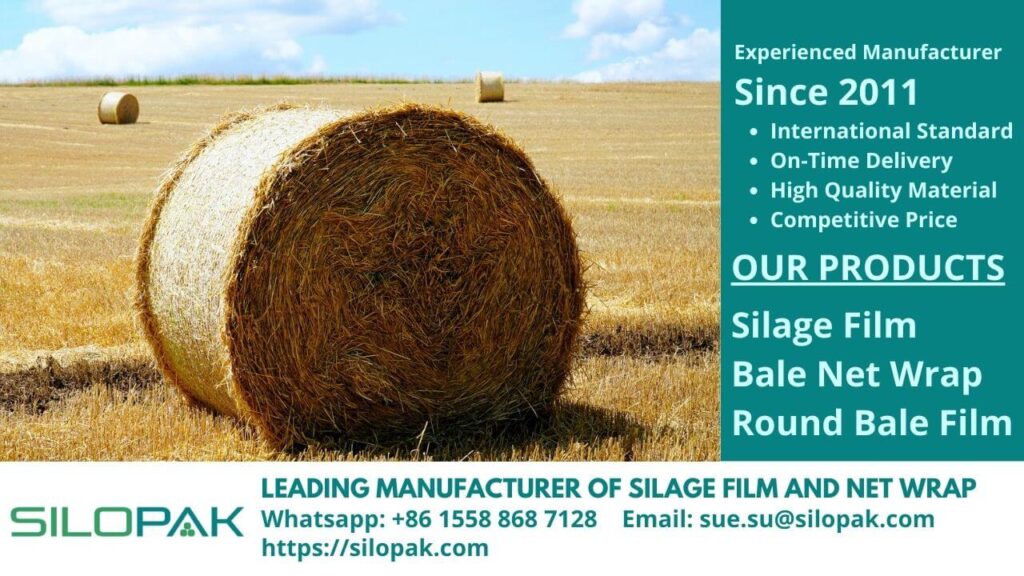
Along with the times, the management of livestock is also getting better. Many experts continue to develop ways of storing animal feed in the form of haylage for the long term. Haylage in some areas certainly cannot be produced every day due to the influence of seasons and weather. In addition, the possibility of crop failure due to soil fertility can also reduce productivity.
Therefore, breeders need to know how to care for haylage properly. For that, let’s look at the reviews below.
Haylage is the result of stored hay for a certain period in conditions without oxygen. Hay itself is the fodder that is grown and harvested when its nutrition is maximum, then dried so that it can be stored in the long term. Haylage has a distinctive smell; this smell can attract the attention of livestock to eat it. All types of fodder crops, such as legumes and grasses, can be used as haylage. Of course, with appropriate processing.
Why Does Haylage Have To Be Free Of Oxygen In Storage?
To produce good haylage, you must maintain oxygen-free conditions throughout the hay storage period. This oxygen-free condition is intended so that the nutrients in it do not decrease. If the hay is wet, the fermentation process will occur. In addition, it can also cause heat to burn due to the presence of air. For this reason, the moisture content in hay must be maintained in the range of 40 – 60%.
How To Make A Good Haylage
- The first step is to prepare the tools and materials to be used, including:
· Tools: sickle or blade of grass, fork turning grass, tarpaulin, ropes, and a place for drying grass.
· Ingredients: fine-leaved grass, legumes, or seeds.
- The second step is to cut the grass short that is ready to harvest. Mowing the grass is done when the nutritional conditions are maximum.
- Next is the process of drying the hay so that it is free of oxygen. This can be done by leaving the crops withered and exposed to the sun in the field. At that time, the humidity level will decrease, and the percentage of dry ingredients will increase. This moisture level is measured when the feed is rolled.
- Do the turning every 2 hours and repeat the drying process for the next 2-3 days. If it rains, then the hay pile should be covered with a tarp.
- After the grass is dry enough, you can roll it up or pile it up with a tied rope.
- The last step is to wrap it in plastic and make sure no air gets into it.
To determine the quality of the haylage you make, consider the following parameters:
- There is a characteristic smell of grass.
- Haylage is greenish (like withered).
- Water content ranges from 40 – 60%.
- Dry but flexible and not easily broken because there is still water content in the grass.
- Airtight, not overgrown with fungus and not undergoing a fermentation process (marked by the presence of heat in the feed).
How To Store Haylage In The Long Term
The process of achieving the best quality of haylage is, of course, when it can last for a long time. For this reason, the method of storing haylage must also be considered. As for how to store it can be done as follows:
- Store the dried haylage indoors. This is so that the haylage is not exposed to rain and makes it wet, moist, and generates heat.
- Try not to directly touch the floor. Place the base 15 cm high to keep the bottom of the haylage from getting wet.
- Provide adequate air ventilation.
- Use a cover in the form of net bale wrap and round bale film. These two products from Silopak can help protect haylage during a storage period of approximately 18 months. This packaging does not have a residual hazard, so it is safe and will not affect the nutritional condition of the feed.
So, in principle, this haylage treatment must be carried out in dry and oxygen-free conditions. To get the best quality haylage in the long run, you also have to pay attention to the storage process. That way, you don’t have to worry about stocking up on fodder during winter—good luck and hopefully useful.

